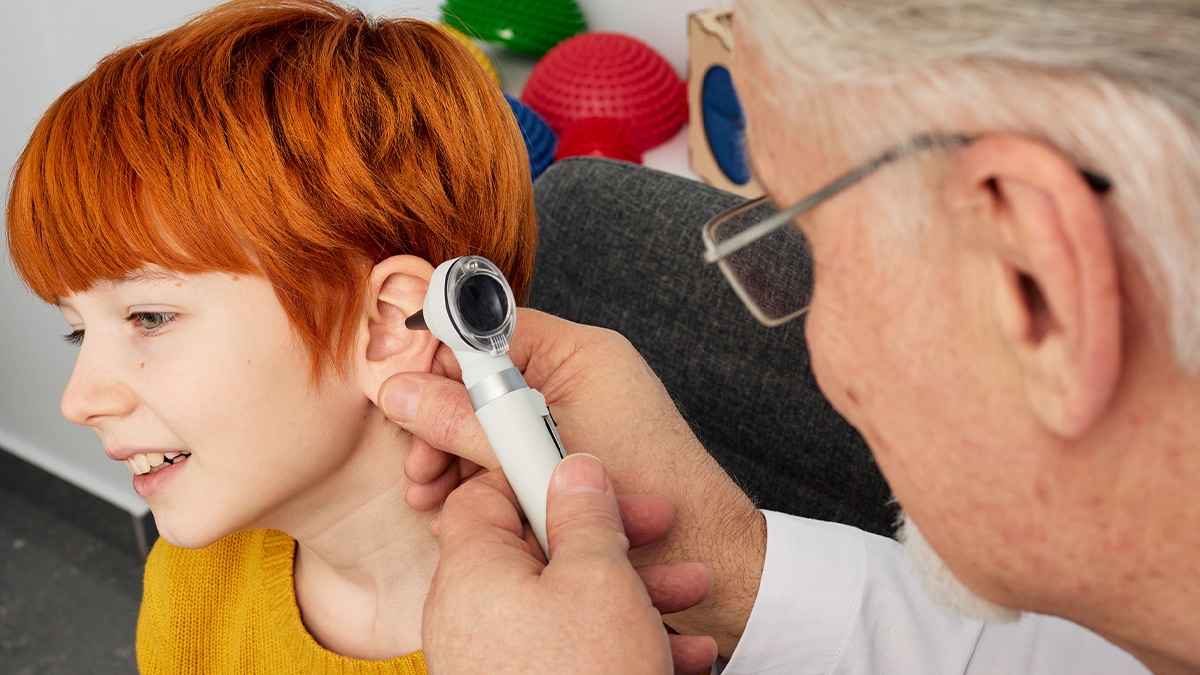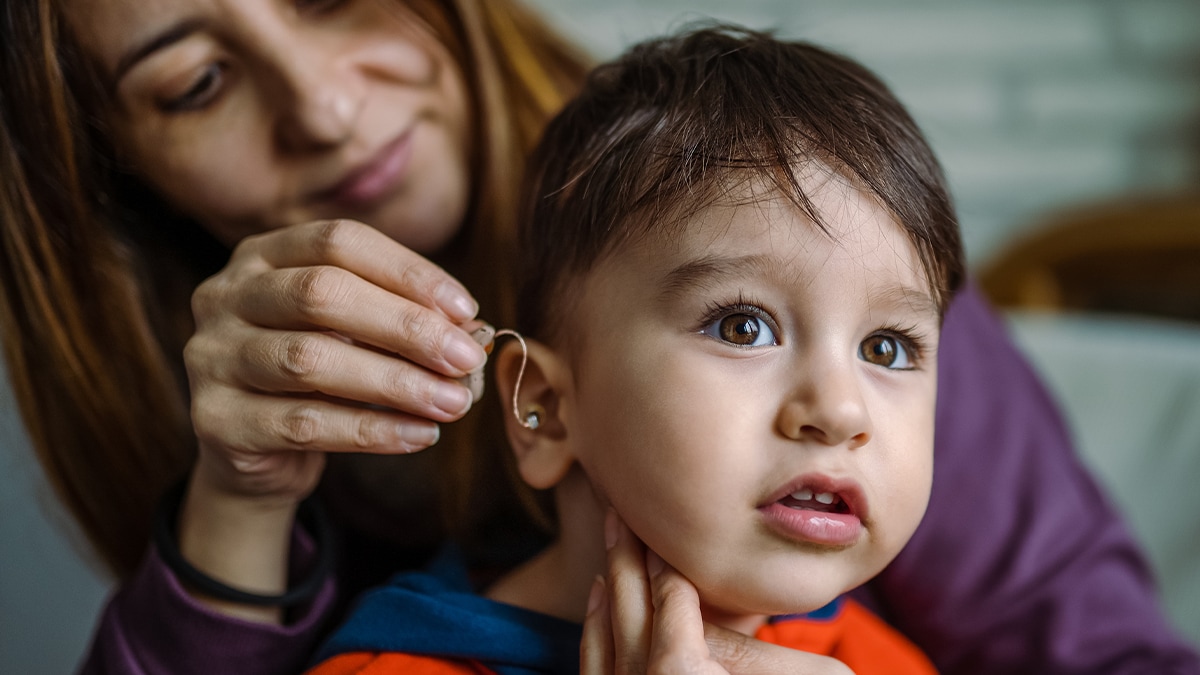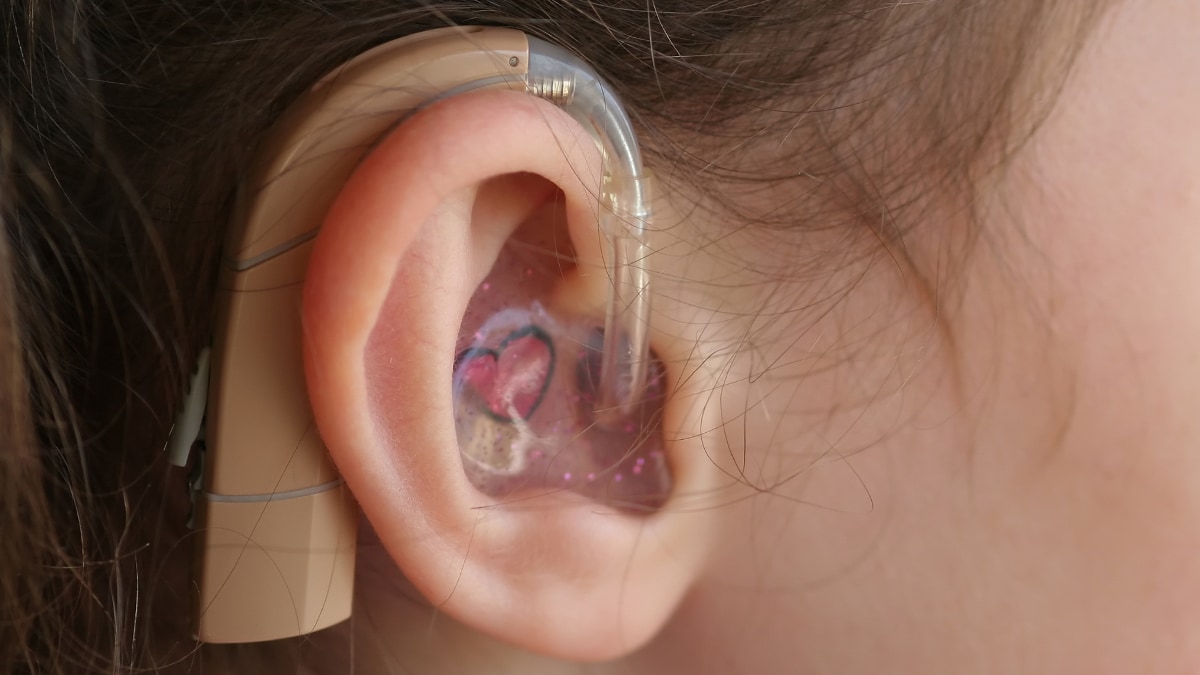At a glance
There are many intervention options to consider for children with hearing loss and their families. These options allow professionals to design programs that best fit the needs of individual children and their families.

Family support services
For many parents, their child's hearing loss is unexpected. Many parents need time and support to adapt not only to having a new family member but also to the child's hearing loss.
Parents of children with recently identified hearing loss can seek different kinds of support. Family support is anything that helps a family. This help may include advice, information, having the chance to get to know other parents that have a child with hearing loss, finding childcare or transportation, giving parents time for personal relaxation or just a supportive listener.
Other parents
Many families find it helpful to meet and talk with other families that have older children with hearing loss. In some states there are parent-to-parent support groups that help match parents with other parents for support. There are also national support groups available. Ask your professional team about these resources in your community.
Faith based
Sometimes families get support from their clergy or other members of the faith-based group to which they belong.
The team
Another important place to find support is from the members of the child's team of professionals. The members themselves can provide help, or refer a parent to a counselor or a social worker to talk about personal, financial, family, or marriage issues.
Families find support in many ways. Other types of support might include friendships with deaf or hard-of-hearing adults, community resources, their own families, and others. Each family is unique. Therefore, families can build supports that work for them.
Technology and audiology
Many children who are deaf or hard-of-hearing have some hearing, called "residual hearing." There are many ways to make the most of your child's residual hearing.
Hearing aids
Hearing aids make sounds louder. They can be worn by people of any age—including infants. Young babies with hearing loss can understand sounds better using hearing aids. This gives them the chance to learn speech skills right from birth.
There are many styles of hearing aids. They can help many types of hearing losses—mild, moderate, severe, and profound. Your child's audiologist will help you pick the best type for your child's hearing loss. A young child is usually fitted with behind-the-ear (BTE) style hearing aids because they fit better on growing ears. Behind-the-ear hearing aids come in skin color as well as many bright colors.


Earmolds
A plastic earmold is connected to a behind-the-ear hearing aid and is fitted for the child's ear. It directs sound from the hearing aid into the ear canal. Each person's ear is shaped differently, and a child's ear will change as he or she grows. Because of this, and to make sure they fit comfortably, earmolds are individually made for each child.
An audiologist uses a soft material to make a copy of the child's outer ear canal. This is used to make an earmold that will fit the child exactly. As the child grows, new earmolds can be made and attached to the same hearing aid.
Making sure the hearing aid is working right
Your child's audiologist can show you how to keep the hearing aid clean and working. Here are a few things that he or she might talk about.
Whistling sounds
Babies and children outgrow earmolds quickly. If the earmold is too small, you will hear a whistling sound. That means that sounds from the hearing aid are leaking out. Sometimes you can adjust the earmold in your child's ear and the whistling will stop. But if the whistling doesn't stop after adjusting the earmold, it might be too small. If this happens, call your child's audiologist for an appointment so he or she can check it. Your child might need a new earmold.
Listening to the sounds from a hearing aid
Your child's audiologist might give you a small listening tool (stethoscope) that is specially made for hearing aids. You can join the hook of the hearing aid to the tube of the stethoscope. Your audiologist will show you how it works.
Batteries
You can buy hearing aid batteries at drug stores, grocery stores, and many other stores. Most batteries have a small tab hooked to them. Take this off and put the batteries in the hearing aid following the instructions from your child's audiologist or hearing aid instruction booklet. Your child's audiologist might also give you battery testers. These will help you know if the battery is still working.
Getting dampness (moisture) out of the hearing aid
Excess moisture can make your child's hearing aid not work. Your child's audiologist can show you how to keep the hearing aid dry.
Keeping the hearing aids on your child
Babies and young children sometimes take out their hearing aids, play with them, lose them, give them to pets, or put them in their mouth. Sometimes the hearing aids fall out and the child doesn't know to pick them up. This can be very frustrating for parents. Ask your child's audiologist for ideas about how to keep hearing aids on your child. Here are a few ideas. Your child's audiologist may have others:
- Plastic rings—these can be used to keep hearing aids on a child's ear. There are two loops which fit around the hearing aid and are connected to a larger loop which fits around the outer part of the ear.
- Attach to clothing—a cord can be attached to the hearing aid and then clipped to your child's clothing.
- Shorter earhooks—an earhook is the part of the hearing aid that connects the hearing aid to the earmold. Shorter earhooks can make the hearing aid fit better and the hearing aids stay in place better.
- Double sided tape (wig tape)—this tape can be attached to the back of your child's ear and to the hearing aid. You will need to change this tape often. Your child's audiologist can show you how to use the tape.
Keeping your child safe
Batteries are very dangerous if swallowed. Hearing aids for infants and young children can come with a battery door lock. This lock does not let babies or young children remove the battery. An adult can lock and unlock this door using a small screwdriver.
Never let your baby or young child play with batteries. The batteries are small and can be swallowed.
Hearing aids, earmolds, and batteries should never be put in the mouth. Infants and children can choke on them.
If any one of these are swallowed get your child medical care immediately by calling a doctor or taking your child to an emergency department.
Cochlear implants
A cochlear implant can help a person with severe to profound hearing loss. It gives that person a way to hear when a hearing aid is not enough. Unlike a hearing aid, cochlear implants do not make sounds louder. A cochlear implant sends sound signals directly to the hearing nerve. These signals go around parts of the inner ear (hair cells) that are not working right. A cochlear implant does not "cure" hearing loss, but does allow a person with hearing loss to make out sounds.
How does a cochlear implant work?
A cochlear implant has two main sections—the parts that are placed inside the ear during surgery, and the parts that are worn outside the ear after surgery. The parts outside the ear send sounds to the parts inside the ear.
How is a cochlear implant placed in the ear?
Surgery is needed to put in a cochlear implant. The surgery takes a few hours and general anesthesia is needed. Usually, children and adults getting a cochlear implant have to stay in the hospital one night after the surgery. It takes about 3 to 5 weeks for the skin over the surgery site to heal, but children usually return to normal activities in about 10 days.
If your child gets a cochlear implant, he or she will have to go back to the audiologist 4 to 6 weeks after surgery to have the cochlear implant turned on. After the cochlear implant is turned on, your child might need many more visits to make sure the cochlear implant is correctly adjusted.
Your doctors and audiologist may also recommend that your child get training with a speech-language pathologist. A speech language pathologist is a professional who is trained to know about how children learn language and to teach children to use speech and language. This training will help your child understand the new sounds that he or she hears with a cochlear implant.
Who can get a cochlear implant?
Adults and children can get a cochlear implant—even very young children and babies. A cochlear implant may be good for children and babies with severe or profound hearing loss that can't be helped by a hearing aid. For more information on what a cochlear implant can do for your child, please talk with your child's doctor or audiologist.
Illness Prevention
How can my child get a cochlear implant?
If you think you want your child to have a cochlear implant, your child will need to be evaluated to make sure he or she is healthy enough for surgery and will need to have his or her hearing levels checked.
Please talk with your child's doctor and audiologist to learn more about the process.
How can I pay for the cochlear implant?
A cochlear implant costs about $40,000 to $90,000. This includes:
- Visits to doctors and audiologists' offices before the implant is put in.
- The cochlear implant itself.
- Surgery.
- Appointments needed to make sure the implant works correctly for your child.
This sounds like a lot of money but many insurance companies and state Medicaid programs help pay for the cochlear implant costs. Talk with your child's doctors and audiologist. They will tell you how to find out more.
What will my child's hearing be like with the cochlear implant?
Each child's hearing loss is different from the hearing loss of other children. So, please talk with your child's doctor or audiologist. They know your child well and can give you a better understanding of what a cochlear implant can do for your child.


Other assistive devices
Besides hearing aids, there are other devices that help people with hearing loss understand sound.
FM systems are commonly used for babies and young children
An FM system is a kind of device that helps children with hearing loss. FM stands for frequency modulation. It's the same type of signal used for radios. FM systems send sound from a microphone used by the person speaking to a child wearing the receiver. This system is sometimes used with hearing aids. An extra piece is attached to the hearing aid that works with the FM system. This extra piece is called an "audio input boot."
Normally, when a person speaking is not standing next to a child with hearing aids, the child might hear other noises in the room. These extra noises might not be a problem for a child without hearing loss. But for a child with hearing loss, speech and other noises get mixed together and make the speech difficult to understand. With FM systems, the person who is speaking wears a microphone that sends the speech right to the child's ears. This means the child hears just the speech, without most of the unwanted noise.
Captioning
Many television programs, videos, and DVDs are captioned. Television sets made after 1993 are made to show the captioning. You don't have to buy anything special. Captions show the soundtrack of a program on the bottom of your television screen. If you have your child watch children's programs, you may want to turn on the captioning.
Other devices
There are many other devices available for children and adults with hearing loss. Some of these include:
- Telephone amplifiers
- Flashing and vibrating alarms
- Audio loops systems
- Infrared listening devices
- Portable sound amplifiers
Please ask your child's audiologist about these and other types of assistive listening devices
Medical and surgical solutions
Medications or surgery may also help make the most of a child's hearing. This is especially true for a outer or conductive hearing loss, or one that involves a part of the outer or middle ear that is not working in the usual way.
One type of conductive hearing loss can be caused by a chronic ear infection. A chronic ear infection is a build-up of fluid behind the eardrum in the middle ear space. Ear infections are common for all children, including children who have a hearing loss. Even young infants can get them. If you think your child has an ear infection, it is important to take him or her to your child's doctor. For a child with a hearing loss, an ear infection can lessen the hearing even more. Please talk about this with your child's doctor, and your team.
Most ear infections can be treated with medication or with careful observation. If your child's doctor finds an ear infection, he or she may prescribe one or more medications for your child to take. Infections that don't go away with medication can be treated with a simple surgery that involves putting a tiny tube into the child's eardrum to drain the fluid out.
Another type of conductive hearing loss is caused by a part of the outer or middle ear that did not form correctly while the child was growing in the mother's womb. There are several parts of the outer and middle ear that need to work together to send sound to the inner ear. If any of these parts did not form correctly, there might be a hearing loss in that ear. This can be improved and perhaps even corrected with surgery performed by an ear, nose, and throat doctor (otolaryngologist).
Placing a cochlear implant is also a type of surgery. Please see the Technology and Audiology section for more information.
